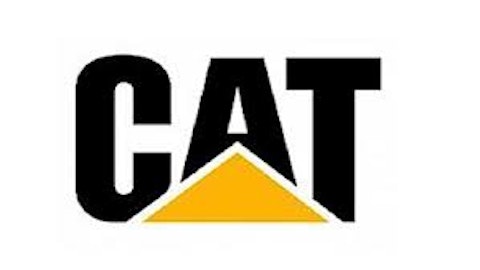Deere & Company (NYSE:DE) is the leading agricultural equipment manufacturer of the world. Founded by John Deere in 1868, Deere’s is one of America’s earliest rags-to-riches story. A poor blacksmith from Vermont, Deere came to Illinois in 1837 and invented the first working steel plow, which all later germinated into today’s huge global industry.
However that may be, and turning to more recent times, Deere & Company (NYSE:DE) has fundamentally been performing well over the last four years. It has experienced a CAGR of 16% in its revenue and more than 50% in its net income. However, the company has been going through a rough patch in the stock market since touching on the level of around $95 in late January.
This performance is not limited to recent months, as the stock has gone through
high volatility in the last few years, as well. After reaching a low of around $24 during the financial economic crisis of 2008 and 2009, the stock recovered phenomenally and reached a level of $100 during April 2011. It fell to around $60 during October 2011 and has not reached that level since that time.
It has been trading in the range of $80 to $95 in the last six months. The stock has under-performed the market in the last two months by around 12%. But does that make the stock undervalued? The answer to this question will be given in the subsequent sections of this article.
Relationship with corn prices

Due to predictions for weakness in the US agricultural market, Wells Fargo has downgraded the stock to ‘underperform’. They have also announced their bearish outlook on the industry’s performance for the financial year 2014 and 2015 as well.
UBS has also downgraded Deere’s stock to ‘neutral’. These downgrades have purely been a result of expectations for a decline in corn prices, which will result in lower market demand and therefore lower sales forecasts.
Financial performance
Deere’s FYQ1 earnings beat market estimates, with an EPS of $1.65 against an estimate of $1.40 per share, and revenue of $7.4 billion against an estimate of $6.7 billion. This revenue was an increase of 10% as compared to the year-ago period. Net sales for the worldwide equipment operations rose 11 % for the quarter. Company equipment sales are projected to rise about 6% for fiscal 2013 and about 4% for the second quarter versus the comparable year-ago periods.
During the release of the quarterly earnings, the chairman and CEO of the company was very optimistic about Deere’s performance in the subsequent quarters and expressed faith in the company’s ability to earn profits despite economic volatility.
Recently the company announced double-digit growth in March tractor sales in the US and Canada as compared to just an 8% increase in industry sales. Overall sales have seen a triple-digit growth as compared to 67% growth for the industry. The company has also announced an increase in its dividend to $0.51 per share.
Comparison with the competitors
Caterpillar Inc. (NYSE:CAT), one of the company’s major competitors, is not going through a great phase currently. It hasn’t been able to drive sales higher in China where it has committed a lot of capital expenditures. It also went through an accounting-fraud fiasco while acquiring a firm in China. But still, Caterpillar has strong fundamentals, with an expected EPS growth rate of more than 18% in the next five years. And with its strong focus in the fastest emerging market of the world — China — the company should be able to reverse its falling global sales.
Cummins Inc. (NYSE:CMI), on the other hand, has been on the rise since last October, similar to other machinery stocks, which have risen by around 22% on an average. Cummins has re-strategized its inventory schedule in various geographical regions and is a good pick for investors who are looking to diversify into emerging markets.
The P/E ratio of Deere & Company (NYSE:DE) is 10.48, which is lower than Cummins (12.42), but almost similar to Caterpillar (9.75). The company’s profitability ratios, such as gross profit, EBIT margin, net profit margin etc., are higher than the industry average. Return on equity, which determines a company’s long-term growth potential, is also one of the highest among its industry peers. Liquidity ratios are more than its competitors. All this suggests that Deere has a strong balance sheet and has optimistic growth potential. The only issue is that it is a hugely leveraged company with a very high debt/equity ratio of 436.23. This is way above the industrial average of 49. But due to high return on equity and operating cash flows, no impediment in the company’s growth is expected.
